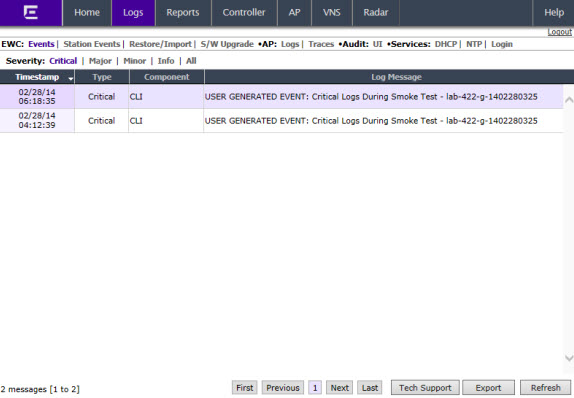If one of the controllers in a pair fails, the communication between the two controllers stops. This triggers a failover condition and a critical message is displayed in the information log of the secondary controller.

After an AP on the failed controller loses its connection, it will try to connect to all enabled interfaces on both controllers without rebooting. If the AP is not successful, it will begin the discovery process. If the AP is not successful in connecting to the controller after five minutes of attempting, the AP will reboot if there is no Bridge traffic locally at the AP topology associated to it.
All mobile user‘s sessions using the failover AP will terminate except those associated to a Bridge traffic locally at the AP and if the Maintain client sessions in event of poll failure option is enabled on the AP Properties tab or AP Default Settings screen.
When the APs connect to the second controller, they are either assigned to the VNS that is defined in the system‘s default AP configuration or manually configured by the administrator. The mobile users log on again and are authenticated on the second controller.
When the failed controller recovers, each controller in the pair goes back to normal mode. They exchange information including the latest lists of registered APs. The administrator must release the APs manually on the second controller, so that they may re-register with their home controller. Foreign APs can now all be released at once by using the Approve as Foreign button on the Access Approval screen to select all foreign APs, and then clicking Release.
To support the availability feature during a failover event, you need to do the following:

 Print
this page
Print
this page Email this topic
Email this topic Feedback
Feedback